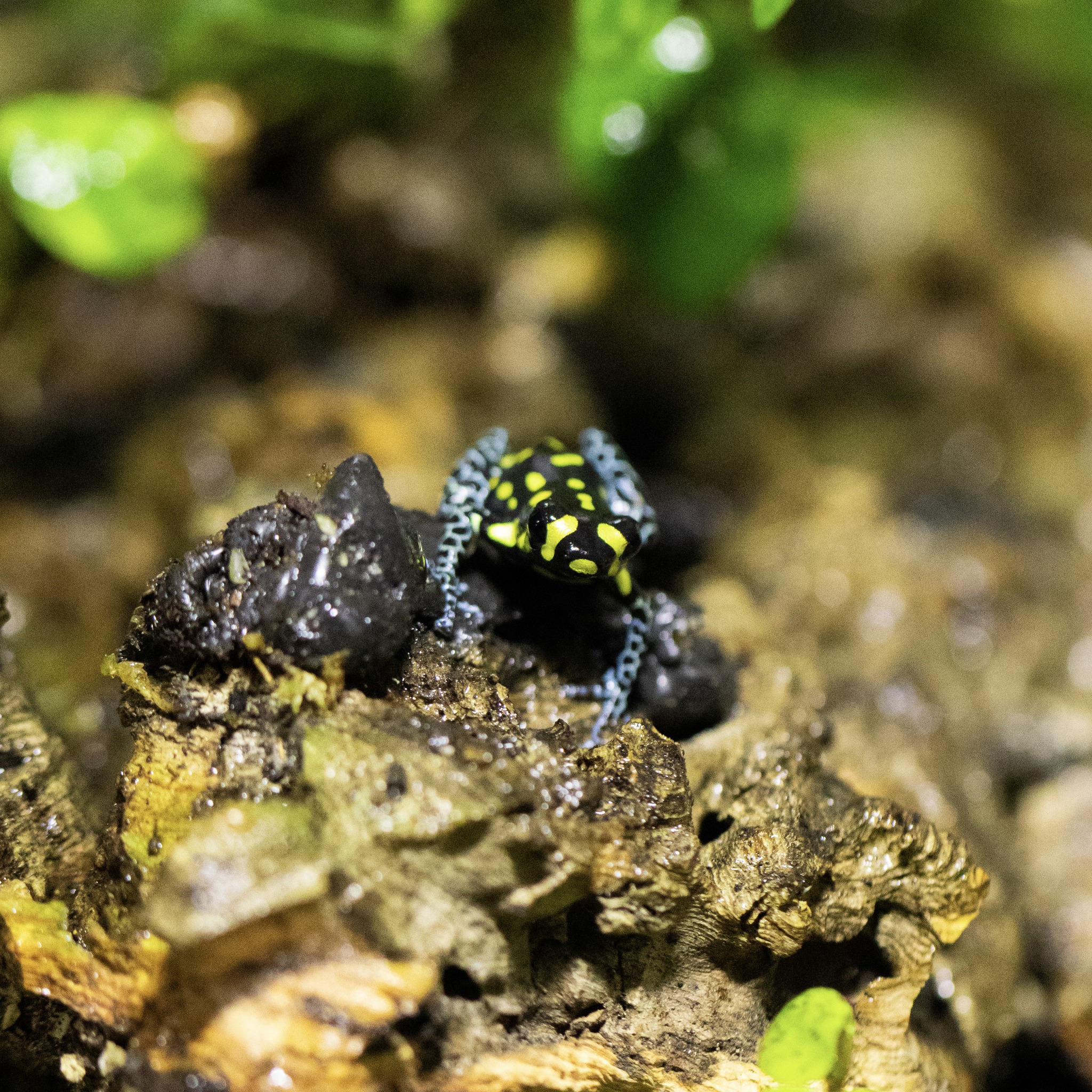- Understanding the ecological significance of the splash of green, black, and blue
- Zoological features and habits of vibrant amphibians
- Challenges and strategies in zoo management and amphibian conservation
- The role of wildlife conservation in preserving biodiversity
- Educational outreach and community engagement in conservation efforts
The vibrant spectrum of green, black, and blue that hops into our feeds represents a fascinating world populated by various lively amphibians. These creatures, including species like the Blue Poison Dart Frog, are a crucial part of our ecosystems, embodying biodiversity and ecological balance. Their bright colors, apart from making them visually striking, serve as evolutionary traits that play significant roles in their survival.
Amphibians like these colorful frogs possess unique adaptations that reflect their environments. Their skin, for instance, is not just an ornamental feature. It serves functions critical for their survival, including respiration and moisture regulation. These colors can also be a defense mechanism, warning potential predators of their toxicity. Such characteristics underscore amphibians’ intricate relationships with their habitats.
Understanding these creatures necessitates an appreciation for their ecological significance. Amphibians are pivotal in controlling pest populations, such as insects, and can be bioindicators, signaling changes in environmental health. Their presence or absence can indicate the state of an ecosystem, reflecting issues like pollution or habitat destruction.
The challenge of maintaining healthy amphibian populations extends to zoo management and conservation efforts. Many species face threats from habitat loss, climate change, pollution, and diseases like chytridiomycosis. Zoos play a crucial role in conserving these animals through breeding programs and habitat simulations, maintaining genetic diversity, and reintroducing species into the wild.
To excel in zoo-based conservation, comprehensive management strategies are necessary. This includes ensuring that enclosures mimic natural habitats and that species-specific care protocols are in place. Additionally, captive breeding programs must be carefully managed to replicate the natural breeding cycles and behaviors of these amphibians.
Conservation efforts, however, extend beyond zoos. In-situ conservation, or preserving animals in their natural habitats, is equally crucial. This involves habitat protection, restoration, and legislation to curb habitat destruction. Critical to these efforts is the collaboration between governments, conservation organizations, and local communities to implement sustainable practices that balance human needs with ecosystem conservation.
Educational outreach and community involvement are central to these conservation strategies. By engaging communities and raising awareness, we can foster a deeper public appreciation for amphibians and the roles they play. Educational programs in schools, community workshops, and interactive exhibits in zoos can inspire action and advocacy for wildlife conservation.
Incorporating technology has proven beneficial in conservation education. Virtual reality systems, for example, can simulate ecosystems, allowing individuals to experience these vibrant habitats and understand the challenges amphibians face. Through such innovative methods, audiences can grasp the urgency of conservation efforts.
In conclusion, the vibrant hues of green, black, and blue that these amphibians bring into our lives are more than just visual delights; they are a reminder of the intricate tapestry of life. Through dedicated conservation efforts and educational outreach, we strive to preserve these fascinating creatures and the ecosystems they inhabit for future generations.
*****
Source Description
Hopping into your feed with a splash of green, black, and blue.🐸💙


